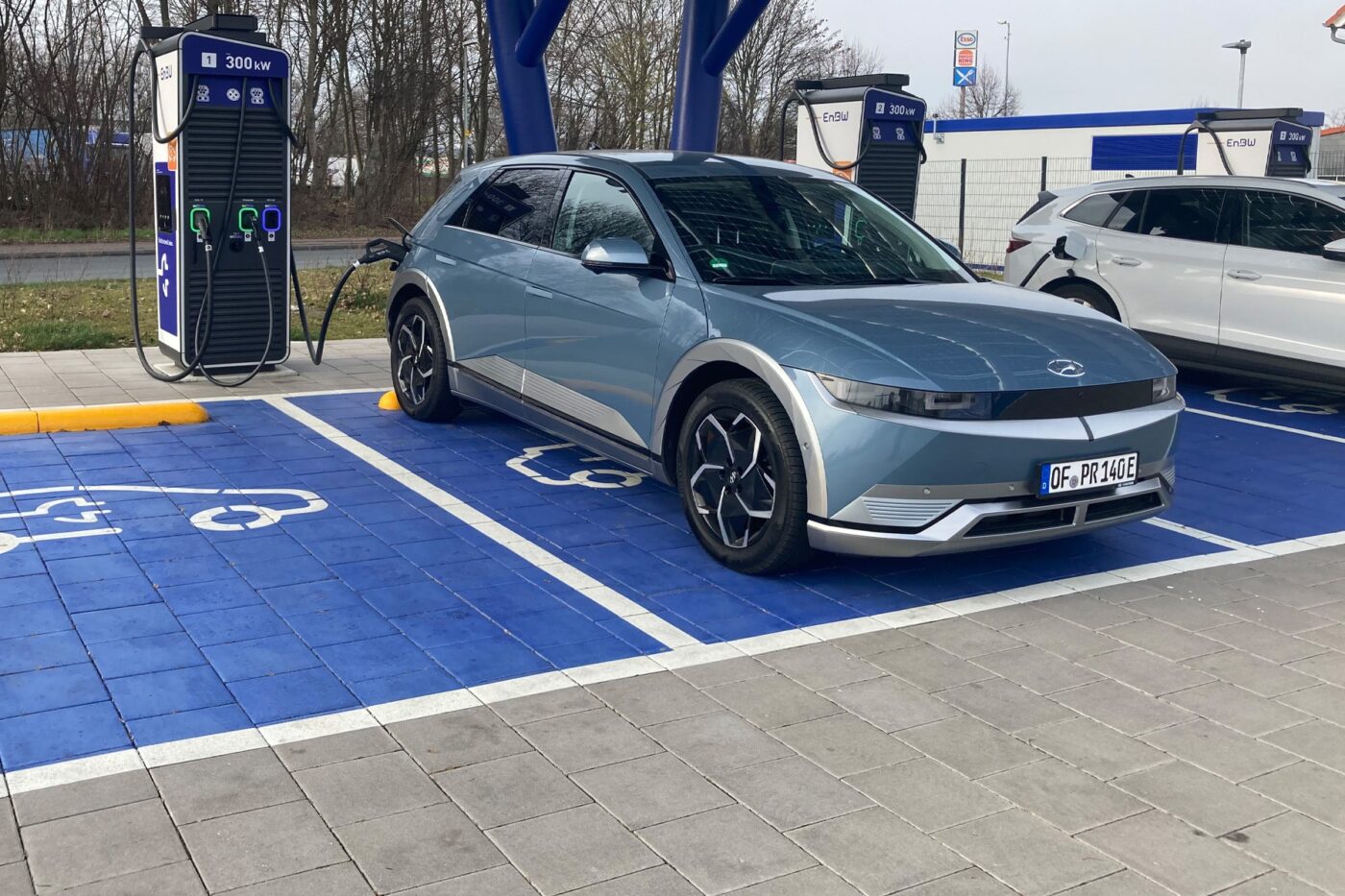
Hyundai Ioniq 5 battery preconditioning: is it worth the upgrade?
We first tested the Hyundai Ioniq 5 in the winter of 2021/2022 in what was its top engine version at the time, namely the 225 kW all-wheel drive and 72.6 kWh battery. In that test, we could charge at over 220 kW even in sub-zero temperatures, albeit only when the battery had warmed up over several hundred kilometres from a previous charging stop. More often than not, we experienced much slower charging processes because the battery was too cold, and the software reduced the charging power to protect the cells. At that time, we were far from the advertised 18 minutes for recharging the battery from ten to 80 per cent capacity as claimed by Hyundai.
Things are different now because the current model year has preconditioning so that it can warm up the battery before charging in winter and cool it down in summer. The goal is to arrive at a fast charger with an optimally tempered battery of about 25 degrees to reliably utilise the best possible charging curve. Reliable, in this case, means that you can rely on achieving a certain charging performance and duration. In the Ioniq 5 without the preconditioning (which can also be applied to older models via software update), it was generally a bit of a lottery as to how warm the battery actually was and at what charging power the car actually charged.
For this latest test, Hyundai provided us with an Ioniq 5 with its large battery option and all-wheel drive. The battery is now 77.4 kWh – just like the Kia EV6 – and the transmission power has increased from 225 to 239 kW with the slightly larger battery. The test car again has high-quality Uniq equipment, only the paintwork is different, and this year the test car has 19-inch aluminium rims with winter tyres.
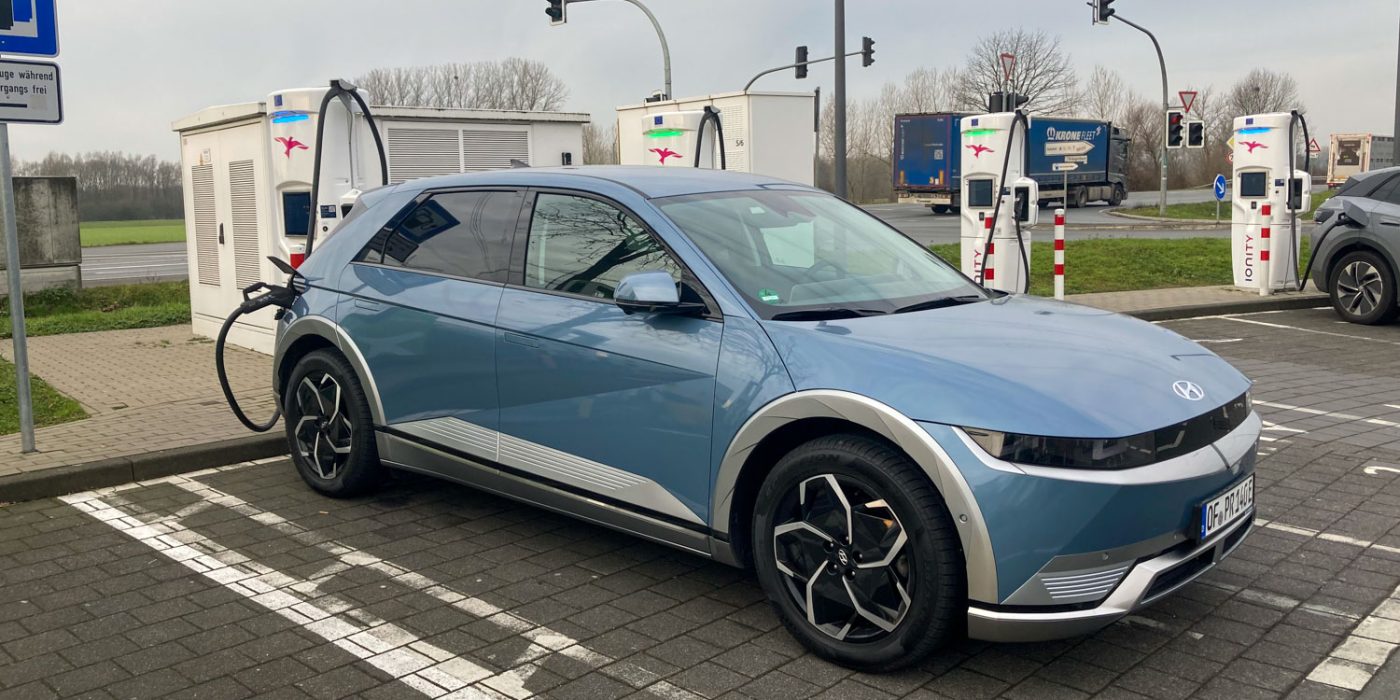
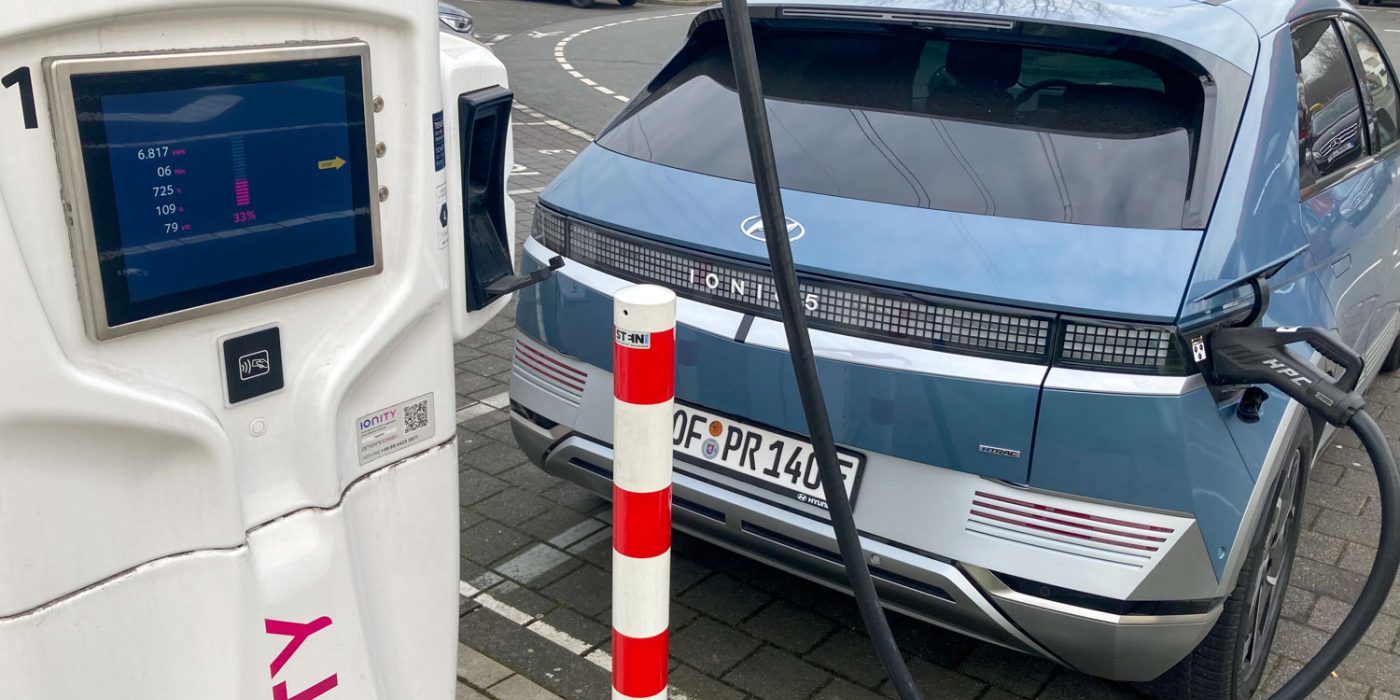
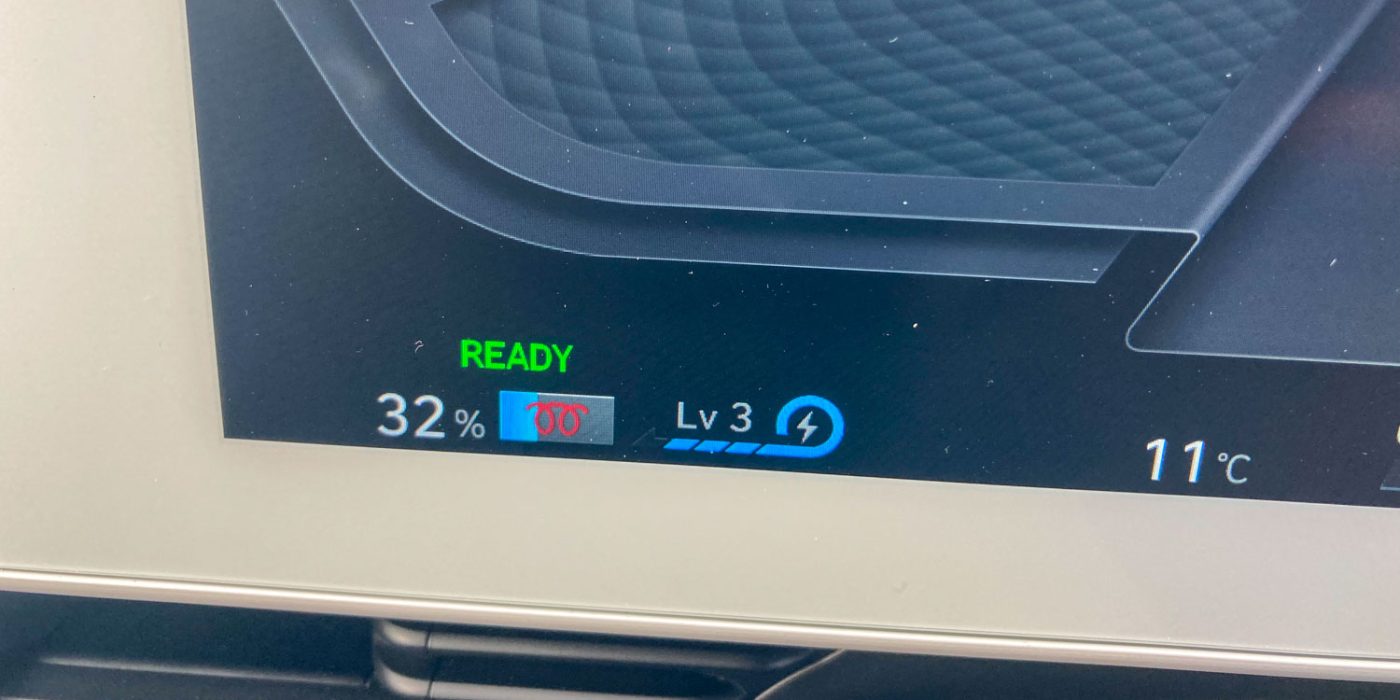
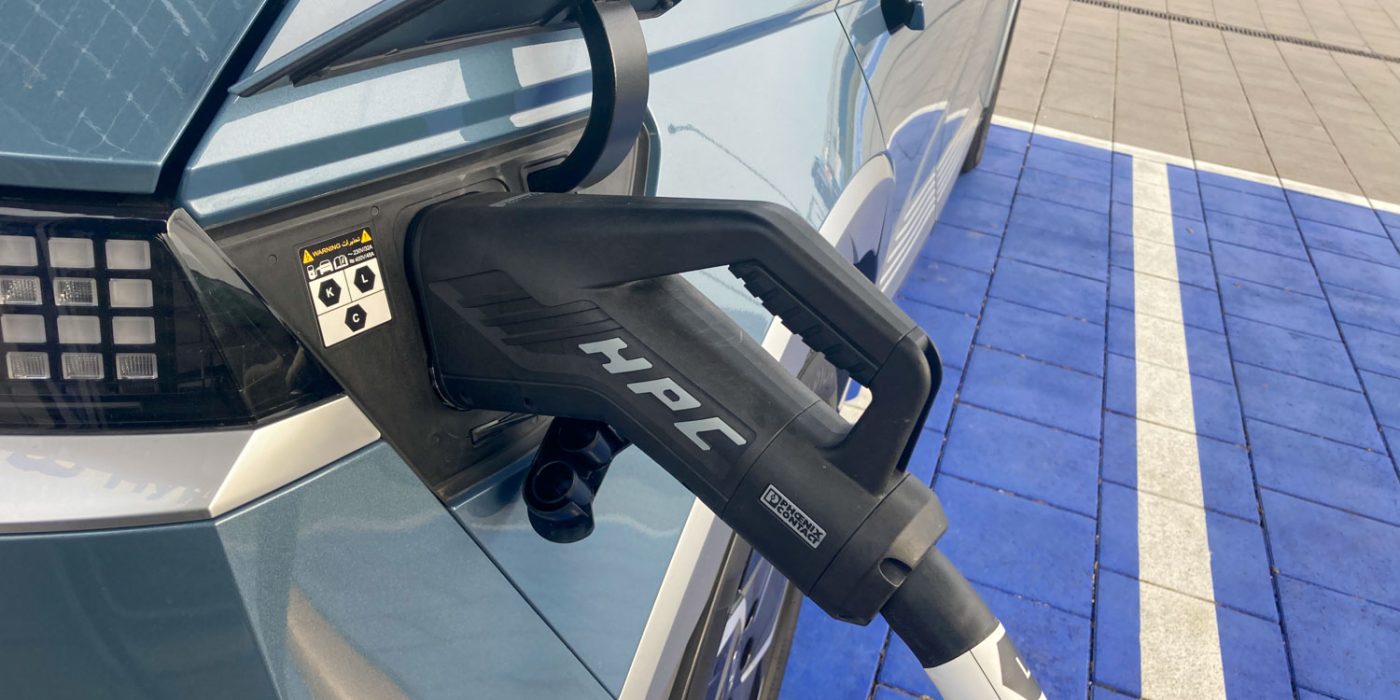
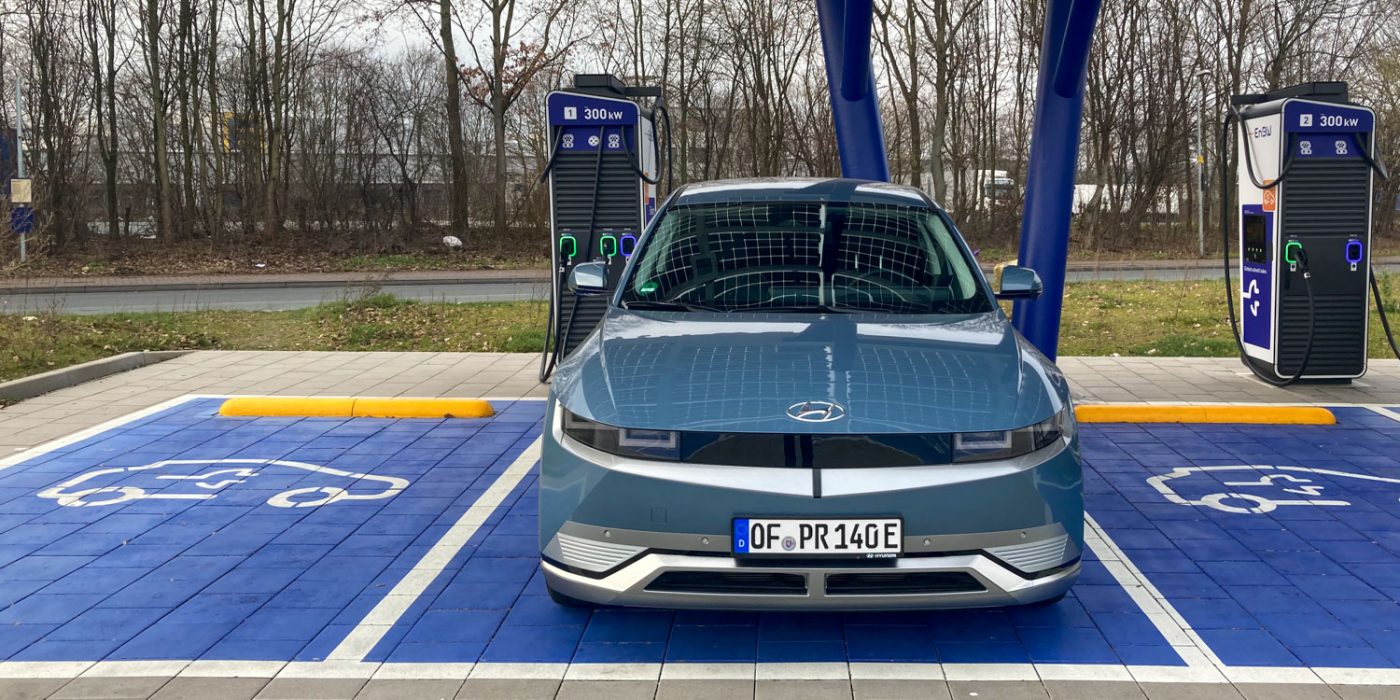
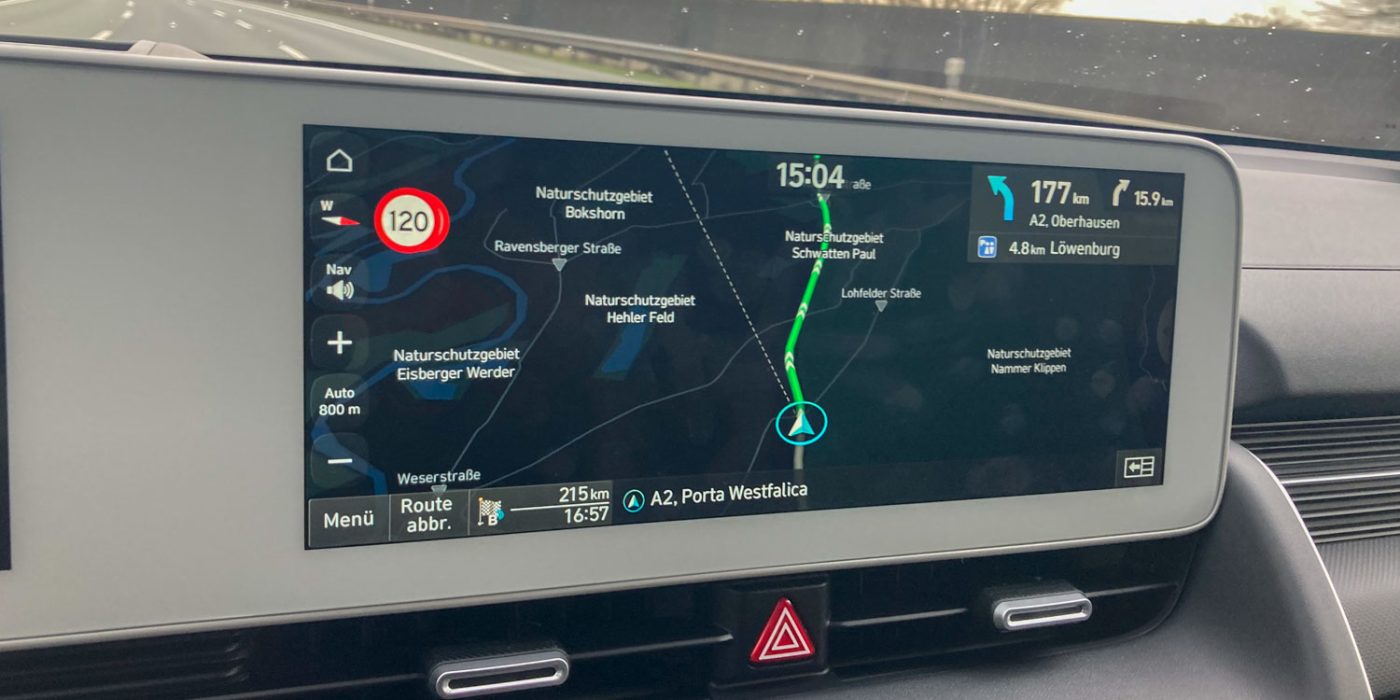
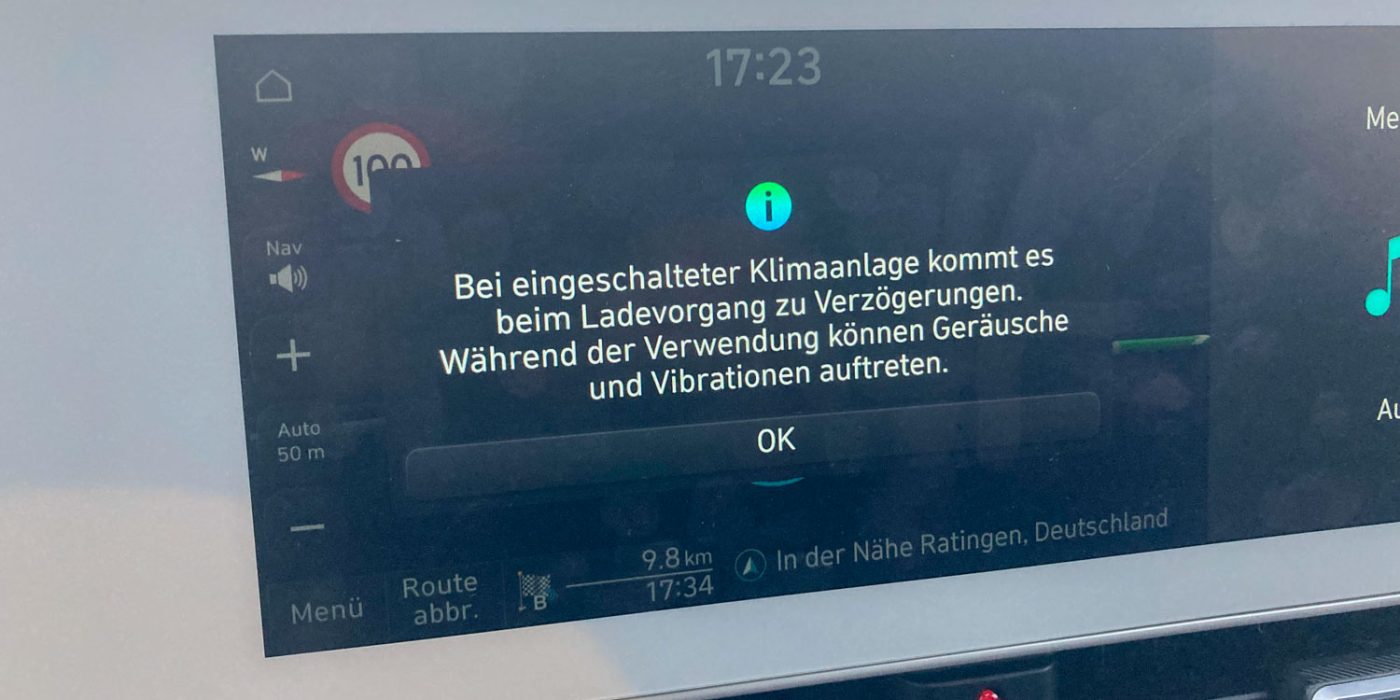
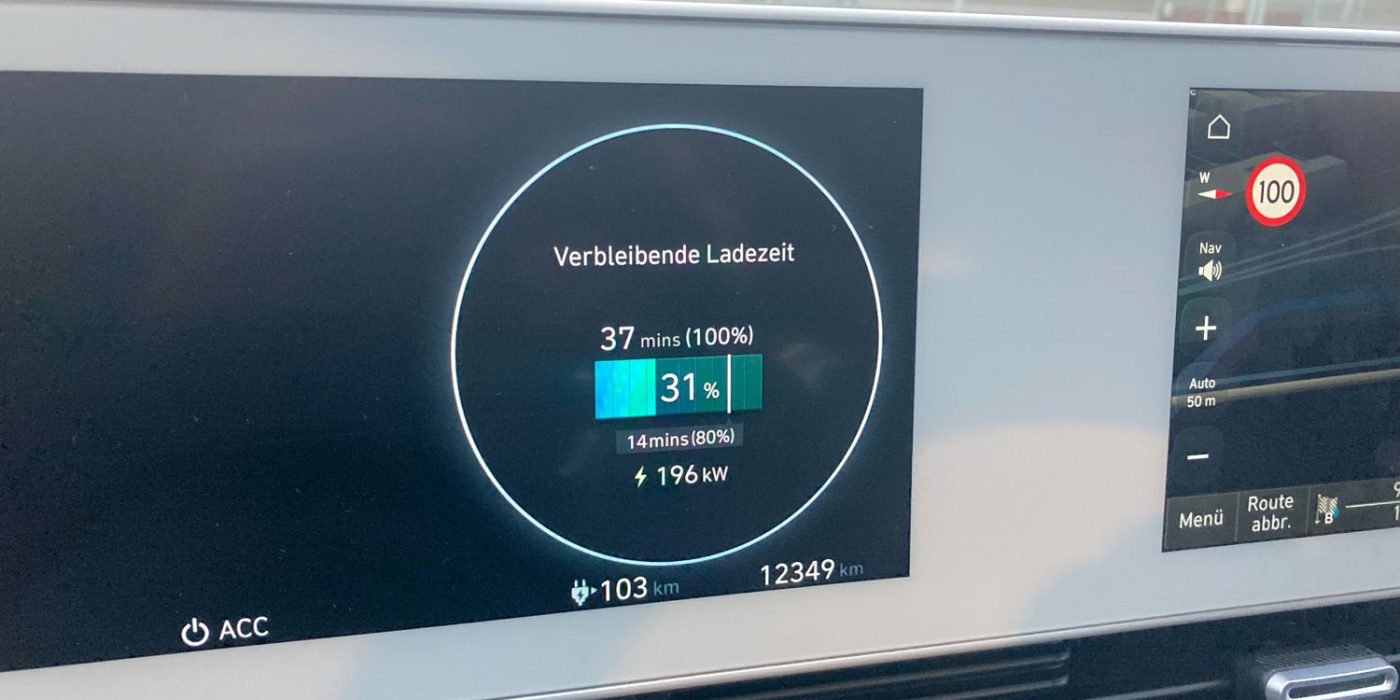
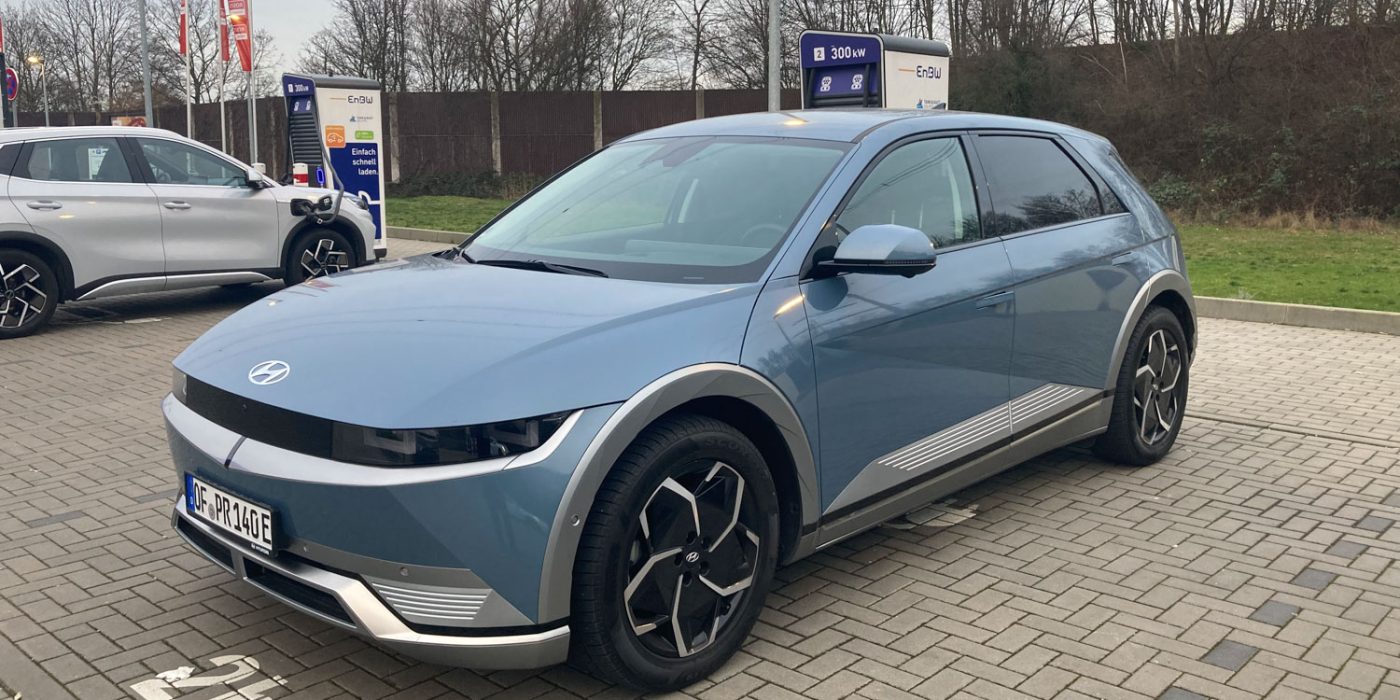
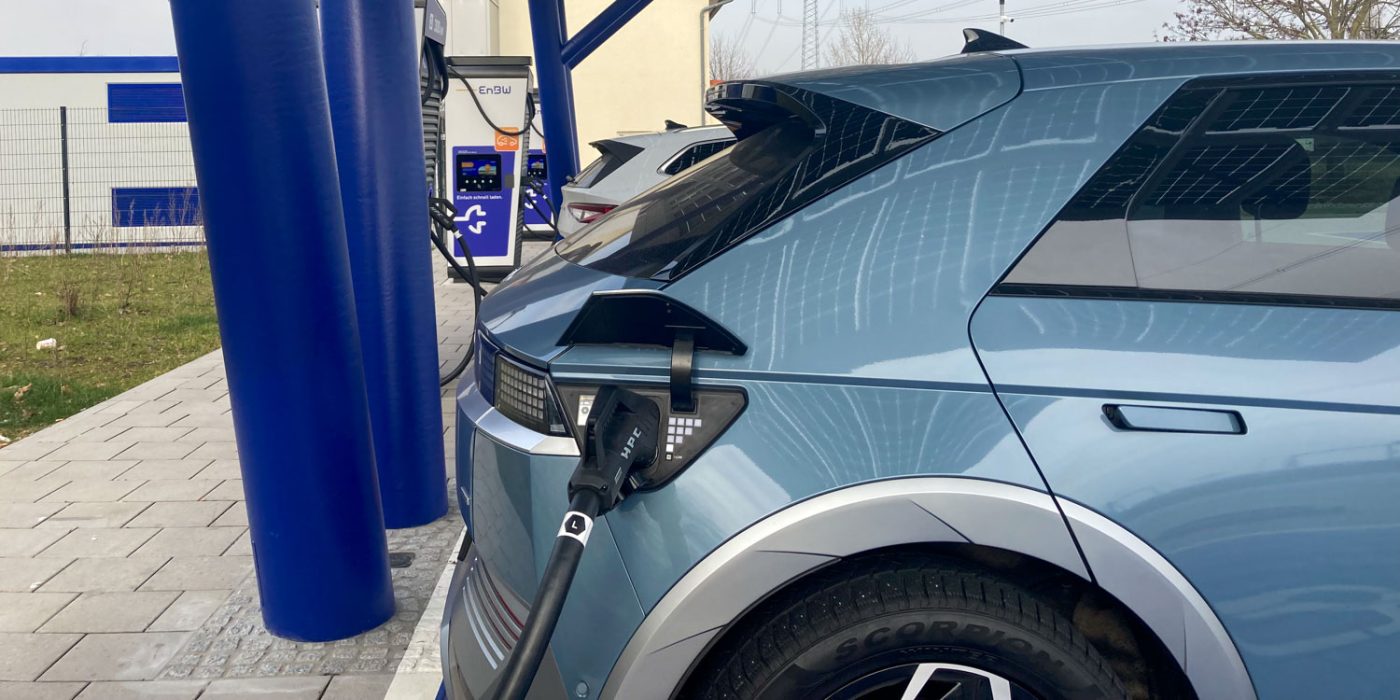
The opportunity to test the updated Ioniq 5 on a highway journey presented itself when Volkswagen invited journalists to an advance premiere of the revised ID.3 to give us an impression of the facelifted model. This meant we had to get from Düsseldorf to Hanover and back, which is a 273-kilometre-journey each way, making for a perfect chance to give the Ioniq 5 a spin. Since the battery in the Ioniq 5 was not fully charged before departure, a charging stop had to be scheduled on the route. At temperatures of four degrees, this was ideal for testing the new function.
At this point, a rather unusual problem began with an error that hadn’t occurred before and could not be reproduced later in the test, the navigation just stopped working. It was possible to enter a destination, but during the requested online route guidance, the system repeatedly got stuck and returned to the main menu after a short pause. A short stop, during which the vehicle was locked for several minutes, did not result in the hoped-for reset of the system, and even the manual reset via the hidden button in the dashboard didn’t help the navigation system at all.
The smartphone connection via Apple Carplay still worked perfectly, and we could still use some kind of navigation, however, the catch in the Ioniq 5 is that the battery preconditioning cannot be started manually but is tied into the integrated Hyundai navigation system the registered fast charging stations. So in our case, the battery had no preconditioned optimal charging temperature on the way to Hanover.
You can see the result in light blue in the graphic below: at the charging stop at Ionity in Lippetal, the charging power fell far short of the possible peak, with 134 kW possible at the peak. The start of the charging process with around 68 kW had initially suggested worse, but even without the preconditioning, the charging power was in the triple-digit range for long stretches. After 28 minutes, 47.5 kWh were charged – still an average of 102 kW.
After arriving in Hanover for our event, the car was parked for several hours. This was apparently enough to reset the navigation system because the error no longer occurred. So we were able to continue with the test on the return journey with a charge level of just over 30 per cent. Next, we set off in the direction of Düsseldorf, with a charging stop planned at the EnBW facility in Lauenau, only about 30 kilometres out of Hanover.
The result of this charging process is shown in dark blue in our graph above: shortly after starting with 113 kW at 19 per cent, the charging power rose to a plateau of around 195 kW. At 40 per cent SoC, 224 kW were then available – which was constant up to 55 per cent. After just ten minutes, the Ioniq 5 charged from 19 to 59 per cent, 19 to 80 per cent was reached after 16 minutes, and even at those 80 per cent SoC, 125 kW still flowed into the battery.
A small side note is that Hyundai has now also adjusted the charging curve above 80 per cent. At 82/83 per cent, the charging power used to drop sharply, and the battery management system had to measure the cells individually after the charging process, just to be on the safe side. Since a significantly higher charging power was released, Hyundai is now confident about doing this without this “measurement pause” because we could no longer observe this behaviour in the test.
Despite the preconditioning, we did not quite reach the peak charging power of 238 kW that we measured last year in the sister model Kia EV6. At low charge levels, the Ioniq 5 measured in winter remained below the charge curve of the EV6 recorded in summer. On the other hand, the Ioniq 5 is more stable at higher charge levels.
As a comparison for a 400-volt vehicle, we have included the Nissan Ariya, which was also tested in winter, in the graph. Since we don’t yet have our own measurements for the charging curve for the current MEB models with a 77-kWh battery, we have used data from Björn Nyland for the VW ID. Buzz in the graph.
Editor’s note: In the drop-down menu of the following chart, you can select any of the vehicles we have on file for comparison. We collected all of the data for these charging curves, as mentioned, with the exception of the ID. Buzz.
182 kW charging power on average
At the end of our charging process in Lauenau, just outside of Hanover, the Ioniq 5 had recharged 58.4 kWh in 25 minutes, making for a rate of 137 kW on average. We charged up to 93 per cent SoC for the purpose of recording the charging curve. If you want to make progress as quickly as possible, you would probably have ended the charging process at 80 per cent and planned a short, second charging stop later. In our window from 19 to 80 per cent, the average was an impressive 182 kW!
The Ioniq 5 would probably have just about managed the remaining 242 kilometres to our destination – we’ll get to the consumption in a moment. But since the author of this text does not have a wall box charger at home, it would not have been wise to park the car with an almost empty battery in order to drive it again the next day. So the Hyundai navigation system scheduled another charging stop at EnBW in Ratingen shortly before returning to Düsseldorf. For this charging session, the Ioniq 5 didn’t preheat the battery. Exactly why this happened remains unclear: either the battery was still warm enough from the fast charging process in Lauenau, or the battery level was too low at the scheduled arrival at the EnBW fast charger. The Hyundai system only works up to a certain charge level. The eleven per cent we still had in the battery on arrival may have been too little. In any case, the small battery preconditioning symbol in the speedometer display did not light up.
The result of this third charging process of the day is shown in green: at the beginning, a slightly better performance was recorded than in Lauenau, the 195 kW plateau was reached a little earlier, and the Ioniq 5 also reached 224 kW a little faster in this case. Both cases involved an Alpitronic Hypercharger HYC300 from the same operator, so it can’t be due to the different behaviour of the charging station. We noticed that the 224 kW could not be maintained for as long as in Lauenau: the charging power was reduced earlier and dropped briefly to about 130 kW before it rose again to 180 kW. The charging curve was similar to that from Lauenau, only shifted by a few per cent of the charge level.
With a warm battery, the Ioniq 5 is in its element
Charging from eleven to 80 per cent took 21 minutes (perhaps due to the earlier 224 kW cut-off), and the average charging power was a proud 161 kW. So again, we couldn’t quite reach the factory specification of 18 minutes, but a difference of three minutes is not far off.
A typical visit to a service station with a short walk to the toilet, purchasing a bottle of water or a coffee and the return journey on foot often takes longer than the actual charging process. Not to mention a sufficiently long break for a meal, as even with a cold battery, the Ioniq 5 charged 47.5 kWh in 28 minutes. With many other electric cars, this is the best possible case, so even “slower” HPC visits with the Ioniq 5 don’t take an eternity. However, it bears mentioning that the winter in Germany in 2021/2022 was not as cold as usual for the season. It’s quite possible that the charging curves would have been quite different with ten degrees less.
Charging update is not convincing all along the line
Is the 2023 model year fully convincing when it comes to charging? As much as the charging performance itself is outstanding, the answer here remains an honest ‘no’. Getting the battery preconditioning to work is simply too complicated for a car that costs €64,900 in the Uniq version (and can be configured to over €70,300 with additional extras) to be convincing across the board. In this price range, one can expect route planning with automatically inserted charging stops, such as Tesla offers, VW’s 3.0 software and even free smartphone apps that can calculate charging stops and duration quite well.
In the Ioniq 5, route planning for preconditioning works as follows: Either you navigate directly to a charging station, or you enter the desired destination address. In this case, the vehicle calculates the route with online real-time data and determines that the range does not reach the destination. A list of HPC stations along the route is then suggested, from which the desired station must be selected manually. This is adopted as a waypoint, and the car takes over the preheating of the battery as required.
The advantage of this is that you can choose where you want to charge. For example, we chose the charging stop in Lauenau, where there were ten hyperchargers with 20 charging points, making it significantly more likely there was a charger available immediately. At the motorway service station with a single Hypercharger and an old Triple Charger next to it, the station is much more likely to be occupied.
Enter-destination-and-go doesn’t live up to expectations
The disadvantage is that as a driver, you have to know exactly what is behind which entry in the list, at what conditions you can charge there with the charging card and, above all, at what distance it is best to plan a charging stop so as not to arrive there with a battery that is too empty and therefore without preconditioning. So prior knowledge and/or manual planning are still necessary to get the most out of the Ioniq 5. Anyone who has just spent €65,000 on a new car or has been provided with a company car in this price range should be able to get to their destination in the best possible way without such prior knowledge. The charging planners of Tesla, Mercedes and the Porsche Taycan show how it’s done.
Incidentally, the Ioniq 6 electric sedan is to be equipped with such an automatic charging stop planning system. This is indicated by the first videos, for example, from Nextmove. So another software update for the Ioniq 5 is possible. But here, too, it remains to be seen how well it really works: Nextmove, for example, rated this function in the Ioniq 6 as being only barely adequate in a first test when the car was stationary and the charging times were extremely long.
For someone taking the Ioniq 5 on more than a city route, it is also important to know what state the battery is in when planning the route. For example, if you have only started the infotainment by simply pressing the start button, the car does not suggest the HPC stations along the route but simply all (AC) chargers in the vicinity. It is only when the car is ready to drive, and the other control units also start up, does the system give a list of HPCs along the route to plan charging stops. From the customer’s point of view, it is rather confusing and incomprehensible why a distinction is made here in terms of functionality.
Further small updates would significantly improve the navigation system
If Hyundai is going to work on the navigation software again anyway, it would be good to have one more function or display. In route guidance, you can only see when you will arrive at your destination and how far away it is. There is no display of the calculated charge level at the destination. This would be helpful to be able to estimate with less experience whether there is enough power to reach the destination or whether there is enough power in the battery before the planned charging stop so that the preconditioning kicks in.
Little has changed for the car’s consumption values with the 2023 model year: The Ioniq 5 isn’t radically energy efficient since the aerodynamics are not good enough, especially on the motorway. On short journeys at low speeds in the city and in the country, it’s easily possible to reach consumption values well below 20 kWh/100km. Even in single-digit temperatures, we sometimes reached 16.6 kWh/100km. The drive system can certainly work efficiently, and the aerodynamically optimised Ioniq 6 will show just how efficient this can be.
When designing the body of the Ioniq 5, Hyundai put aesthetics before aerodynamics. With its steep front and all the angles, the airflow is not optimal, quickly resulting in consumption above 25 kWh/100km on the motorway. In the test average of over 880 kilometres, we came to 24.3 kWh/100km.
A larger battery only makes a small difference
The slightly larger battery hardly makes any difference. Considering the average consumption at primarily single-digit temperatures as a basis, the result is a range of 318 kilometres with a full battery. With the previous 72.6 kWh, that would have been only 20 kilometres less. This gives a little more buffer and flexibility but does not profoundly change the driving experience. A functioning preconditioning system that enables optimal charging in hot and cold conditions without precise prior knowledge of the route, on the other hand, does.
Based on our consumption on country roads, even 466 kilometres would be possible with one battery charge. If you accelerate more on the motorway than we did, and possibly even at lower temperatures, you could get more than 30 kWh/100 km at times – or a range of just under 260 kilometres. Very different consumption levels are possible depending on the driving profile – whereby the design of the Ioniq 5’s body means that higher speeds on the motorway have a greater impact than with more streamlined vehicles.
Conclusion
With the 2023 model year, the Ioniq 5 has become noticeably better and this is prmiarily due to battery preconditioning. It would be inadvisable for drivers of an Ioniq 5 with a 72.6 kWh battery to change simply because of the 20 to 25 kilometres more range, depending on consumption; the more reliable charging performance makes the difference. What Hyundai needs to improve is the handling, which is much better in other models in this price range. By 2023, you shouldn’t have to manually add charging stops in an electric car that costs more than 60,000 euros. Enter your destination, and off you go – the car should do the rest.

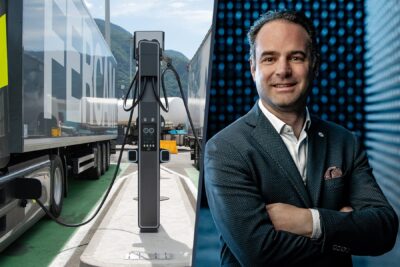
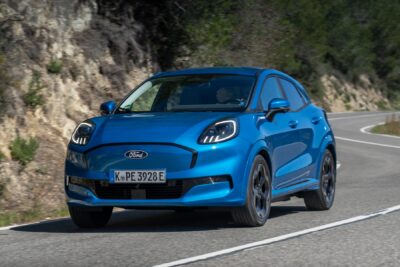
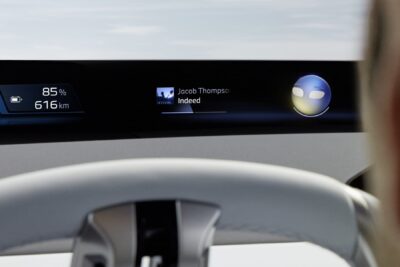
2 Comments